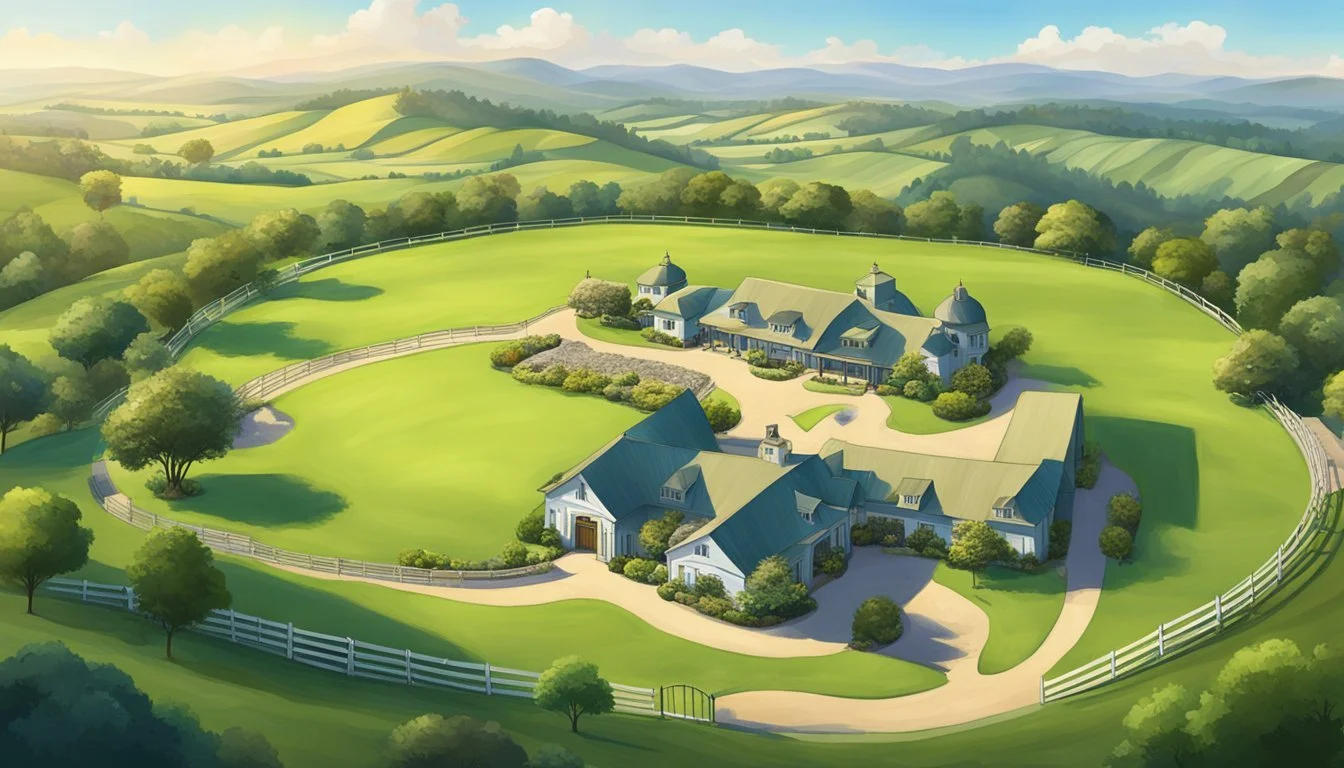Free Land for Horse Lovers
Equestrian Properties Await
Finding free land for horse lovers might sound like a dream, but there are opportunities out there that can bring this vision closer to reality. Various regions across the United States offer incentives to attract new residents, some of which include substantial plots of land suitable for equestrian purposes. Communities aiming to boost their populations often provide land grants, which can be ideal for developing horse properties without the steep initial investment.
For equestrian enthusiasts, choosing the right location is crucial. States such as Texas, Kansas, and certain rural areas in the Midwest frequently offer programs where land is made available at minimal cost or with significant subsidies. This can be a golden opportunity for those looking to establish a horse farm or equestrian estate without breaking the bank.
Additionally, existing horse properties for sale across the U.S. can serve as inspiration. Properties range from small horse farms to large equestrian estates, often found in equestrian-friendly communities. These communities provide extensive amenities like riding trails, boarding facilities, and ample grazing land, making them perfect for horse lovers. By exploring these opportunities, equestrian enthusiasts can turn their dream of owning a vast and vibrant horse property into reality.
Understanding Equestrian Properties
Equestrian properties, also known as horse properties, cater specifically to the needs of both horses and their owners. Key elements such as acreage, barns, and stables define these properties and make them unique.
Defining Equestrian Real Estate
Equestrian real estate refers to any property designed with horse-keeping facilities. These properties often include stables, barns, and extensive fenced areas. The primary purpose is to provide a suitable environment for the care, training, and enjoyment of horses.
Properties might range from modest setups with a few acres and simple stables to expansive estates with professional-grade facilities. They can be used for personal enjoyment, breeding, or training for competitions.
Characteristics of Horse Properties
Horse properties come with specific features tailored to equine needs. Stables are crucial for housing horses, providing shelter and safety. Barns often serve multiple purposes, from storing feed and equipment to including tack rooms or wash bays.
Acreage is essential, as horses require substantial space to roam and exercise. Properties often include fenced pastures to ensure the safety and security of the animals. A well-designed gated entrance can add both aesthetic appeal and security.
Types of Equestrian Estates
Equestrian estates vary widely, each offering different amenities. Backyard horse properties are smaller, catering to hobbyists, while larger professional equine facilities might include specialized training arenas and multiple stables.
Breeding farms focus on the production and care of foals, requiring high-quality barns and veterinary facilities. Riding schools are designed to cater to both horses and students, often featuring expansive arenas and classroom spaces. Each type of estate serves distinct purposes, depending on the owner's intentions and the property's capabilities.
The Equestrian Property Market
The equestrian property market is expanding, driven by increased demand for spacious pastures and eco-friendly facilities. Buyers are seeking properties that offer both a unique lifestyle and sustainable investment opportunities.
Current Trends in Equine Real Estate
The demand for larger pastures has seen a significant rise. Buyers are now prioritizing properties with extensive grazing areas, recognizing the benefits of natural grazing for horse health.
Eco-friendly facilities are another emerging trend. Increasingly, buyers prefer properties with sustainable features, such as solar panels and rainwater harvesting systems. This shift is driven by a broader awareness of environmental sustainability.
Technological advancements also influence the market. High-speed internet and modern stable management systems are crucial for many buyers.
Understanding Listing Metrics
Several key metrics help evaluate equestrian real estate. The listing age indicates how long a property has been on the market. Shorter listing ages may reflect high demand.
List prices vary widely. The average list price for horse properties can exceed $1.3 million, while the median list price is around $649,000. These prices highlight the premium nature of equestrian properties.
The average property size is also notable, with many listings offering around 97.3 acres. Larger properties are highly sought after due to the need for adequate grazing and riding space.
Price Range and Property Size Considerations
When considering equestrian properties, price range and size are critical. Properties range from smaller horse farms for hobbyists to large, luxury estates tailored for serious equestrians.
For those with modest budgets, smaller farms with essential amenities are available. In contrast, high-end buyers often seek expansive estates offering luxury facilities and vast pastures.
The size of the property is a key consideration. Most buyers aim for a balance between sufficient grazing land and manageable maintenance. On average, properties over 70 acres are preferred, combining ample space with practicality.
Overall, each buyer’s needs and financial capacity will shape their property choices within this specialized market.
Finding the Right Equestrian Property
Selecting the right equestrian property requires detailed planning and understanding of specific needs. Location, land type, and working with specialist real estate agents are important factors to consider.
Searching for Properties
When searching for equestrian properties, buyers should use specialized listings. Websites like HorseProperties.net provide extensive options tailored to horse lovers. They feature thousands of listings, from small homesteads to large ranches. Filtering options by acreage, price, and location can help narrow down choices.
For example, a buyer might need a property with accessible trails or proximity to veterinary services. Classifieds and online groups focused on equestrian communities can be helpful. Buyers should also attend local real estate events or horse shows to network and gather recommendations.
The Role of Real Estate Agents
A knowledgeable real estate agent can provide invaluable assistance. They understand property features important for equestrian use, such as soil quality and pasture conditions. It's crucial to work with an agent who specializes in equestrian properties.
These agents often have connections with other experts, such as veterinarians, farriers, and contractors who build stables or riding arenas. They can provide insights on zoning laws and land use regulations specific to horseback riding and keeping livestock. Expert agents ease the process by managing paperwork and negotiations.
Factors for Buyers to Consider
There are several critical factors buyers must consider. Land quality and size are paramount; adequate acreage for grazing and riding is essential. Buyers should look for properties with good soil and drainage to ensure horse health. Avoid marshy or highly rocky terrain as it can be hazardous to horses.
Consider existing facilities like stables, arenas, and fencing. Check for accessible water sources and the availability of shelter from harsh weather. Proximity to amenities such as veterinary services, feed stores, and riding trails can significantly enhance convenience and horse welfare. Assessment of local climate and its suitability for year-round equestrian use is also essential.
In conclusion, a well-chosen equestrian property meets the specific demands of horse care and riding activities, ensuring a positive experience for both the owner and their horses.
Investing in Horse Farms and Ranches
Investing in equestrian properties can be a rewarding venture, combining the allure of country living with the potential for generating income and capital appreciation. Your choice between smaller horse farms and expansive ranches will affect your investment strategy, as will the premium features available in luxury properties.
Small Horse Farms vs. Large Horse Ranches
Small horse farms usually range from a few acres to several dozen. They are ideal for more intimate settings and are often easier to manage. Such properties can support horse boarding, riding lessons, and smaller scale crop production, making them suitable for those new to equestrian investments.
Large horse ranches, on the other hand, can encompass hundreds or even thousands of acres. These properties provide ample space for extensive equine facilities, including multiple barns, training arenas, and vast pastures. The scale of these ranches allows for higher income potential through larger scale boarding operations, breeding programs, and hosting equestrian events.
Luxury Horse Properties and Premium Features
Luxury horse properties offer enhanced amenities that attract high-end buyers. Premium features may include state-of-the-art stables, equestrian arenas, and luxury housing for staff and guests. Well-designed landscapes and trails add aesthetic appeal and functionality to these properties.
Many high-value equestrian properties boast advanced security systems, automated feeding and watering setups, and custom-built barns. These features not only ensure the safety and well-being of the horses but also add significant value to the property, making them highly desirable in the market.
Financial Considerations
When contemplating the purchase of equestrian property, it's essential to assess your budget and fully comprehend all associated costs and fees. Proper planning ensures that there are no financial surprises along the way.
Setting a Budget
Establishing a clear budget is crucial for purchasing equestrian property. Begin by determining your maximum price range, considering both personal savings and potential financing options. Many quality properties can start at around $100,000 and increase significantly from there.
Factors to consider include:
Down payment: Typically, 20% of the property price is standard.
Loan interest rates: These can differ based on credit scores and loan terms.
One-time fees: Ensure you account for inspection costs, closing costs, and a potential signup fee.
Understanding Costs and Fees
The costs of owning an equestrian property go beyond the purchase price. Buyers should prepare for ongoing costs and potential hidden charges.
Key aspects include:
Maintenance: Regular upkeep of the property, barns, and fencing.
Recurring payments: Such as mortgage payments, insurance, and property taxes.
Hidden charges: Watch out for fees like annual assessments, HOA fees, and unexpected repair costs.
Make sure to analyze all these factors carefully to ensure the investment remains within your financial capacity.
Location and Lifestyle
Choosing the right location for an equestrian property involves understanding regional benefits and the unique community aspects. These factors significantly enhance the experience of property owners and their horses.
Ideal Locations for Equestrian Properties
United States: The U.S. offers diverse terrains suitable for horse properties. Popular regions include Tennessee and Ocala, Florida. Tennessee, especially the Nashville area, is known for its lush landscapes and moderate climate. Ocala is renowned for its equestrian culture and training facilities.
Canada: In Canada, properties in provinces like Ontario and British Columbia are notable. Ontario offers scenic countryside ideal for large ranches, while British Columbia provides a mild climate and picturesque views.
Key Features: Proximity to horse-friendly cities, access to well-maintained riding trails, and adequate acreage are essential. Properties across these locations often feature creeks, open pastures, and potential for expansive barns.
The Equestrian Lifestyle and Community
Community: Equestrian communities are often tightly-knit, sharing a passion for horse riding and training. These communities host events like horse shows and clinics, fostering skills and camaraderie.
Day-to-Day Life: Daily routines revolve around horse care, including feeding, grooming, and training. The lifestyle ensures a strong bond between owner and horse.
Facilities: Modern equestrian properties come equipped with state-of-the-art facilities. These include indoor arenas, pastures, and advanced fencing to ensure safety and comfort for horses.
Events: The lifestyle also involves participation in regional and national events, offering opportunities for socialization and competition. Whether in the USA or Canada, the equestrian lifestyle is deeply rewarding and enriching.
Selling Equestrian Estates
Marketing strategies and negotiation techniques are crucial for successfully selling equestrian estates. Effective marketing fosters visibility, while skilled negotiation ensures favorable deal closure.
Marketing Horse Properties
Effective marketing is essential in selling equine property. Sellers need to highlight unique features like acreage, stables, and riding arenas. Professional photography and videography can showcase these distinguishing aspects, making the properties more appealing.
Sellers should use specialized websites like HorseProperties.net, which attract a niche audience of horse lovers. Offline methods, such as flyers in tack shops and feed stores, can also be effective.
Partnering with a real estate agent who specializes in equestrian properties is beneficial. These agents know the market and have access to both buyers and additional networks.
Negotiation and Closing the Deal
Negotiation in equestrian real estate requires attention to detail. Buyers often seek specific features, such as well-maintained barns or mud-free paddocks. Knowledge of these aspects helps sellers justify their asking price.
Appraisal and inspection reports are critical for setting realistic expectations. Equine property buyers may request additional inspections, focusing on land quality and facilities.
Once terms are agreed upon, thorough documentation ensures smooth closure. Ensuring all legal and financial aspects are covered provides confidence to both parties, securing a successful transaction.







